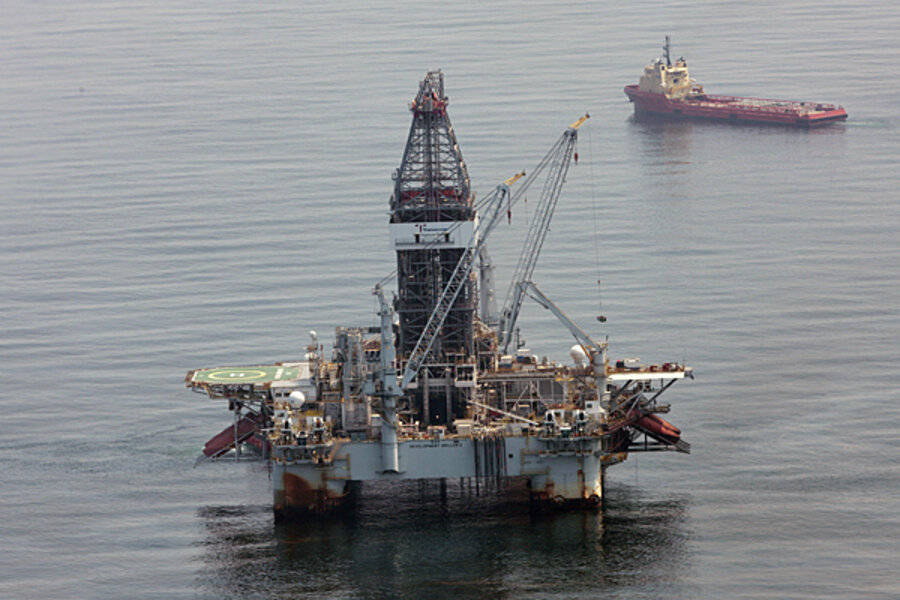House aims to expand oil drilling in Gulf of Mexico
Loading...
British energy company BP announced that its mega Mad Dog project in the Gulf of Mexico wasn't necessarily as attractive as once thought. Oil companies like BP are looking to get things moving again three years after the tragedy tied to the Deepwater Horizon oil rig. Members of the U.S. House of Representatives last week proposed legislation that would open up more areas for drillers offshore. Lawmakers say getting more work done in the Gulf of Mexico would ensure energy independence. The oil industry says U.S. oil production is setting records, however, so it's not yet clear what, if any, interest there is to return so quickly back to the Gulf of Mexico.
BP announced it was reviewing a decision to move ahead with its multibillion dollar Mad Dog development in the Gulf of Mexico. The company started production in the field in 2005 with a facility designed to process 80,000 barrels of oil and 60,000 cubic feet of natural gas per day. The entire field is estimated to hold 4 billion barrels of oil equivalent. BP said Friday it wasn't necessarily keen to move ahead with the second phase of development there, however. (Related article: Obama’s Budget Proposal Boosts Clean Energy at the Expense of Fossil Fuels)
"The current development plan for Mad Dog Phase 2 is not as attractive as previously modeled, due largely to market conditions and industry inflation," the company said in a statement.
Lawmakers in the House of Representatives last week introduced legislation that would amend laws regarding the U.S. continental shelf to make it easier for oil companies to work along the shared maritime border with Mexico. The measure would facilitate the implementation of a bilateral agreement signed last year on transboundary resources. Under that agreement, roughly 1.5 million acres in the Gulf of Mexico would open up to energy explorers. The U.S. Interior Department's Bureau of Ocean Energy Management estimates the region may hold as much as 172 million barrels of oil and 304 billion cubic feet of natural gas.
"We can achieve energy independence and better energy cooperation with our neighbor and this is an important step in that direction," said Foreign Affairs Subcommittee on Western Hemisphere Chairman Matt Salmon, R-Ariz., in a statement. (Related article: UK Renews Drive for Offshore Oil and Gas)
The American Petroleum Institute reports that U.S. oil production in March increased 13.8 percent year-on-year to 7.1 million barrels per day. Crude oil stocks, meanwhile, reached a record for March at 387.9 million bpd. In terms of imports, API reports that those levels are at their lowest level since 1998 at 10.0 million bpd, a 5.3 percent drop year-on-year. This comes against lower petroleum deliveries, a reflection of demand. API states U.S. petroleum deliveries are down about 0.4 percent for the first quarter of the year, reflecting an economic recovery that's like "a sputtering engine with a cylinder or two still not firing," said chief economist John Felmy.
Saturday marked the third anniversary of the oil spill in the Gulf of Mexico. Last week, a trial judge heard closing arguments from BP in a trial that's expected to drag possibly into next year. On Thursday, a raucous crowd descended on Nebraska to weigh in on the ongoing controversy over the planned Keystone XL pipeline, a project touted by its supports as another cog in the energy independence wheel. Against that backdrop are claims from the environmentalists concerned about oil and natural gas development and BP's own assertion on Mad Dog. Given API's economic assessment and increased oil production onshore, maybe working in the Gulf of Mexico isn't as attractive as some on Capitol Hill would like us to believe.
Original source: http://oilprice.com/Energy/Energy-General/Why-the-Rush-to-Return-to-the-Gulf-of-Mexico.html







